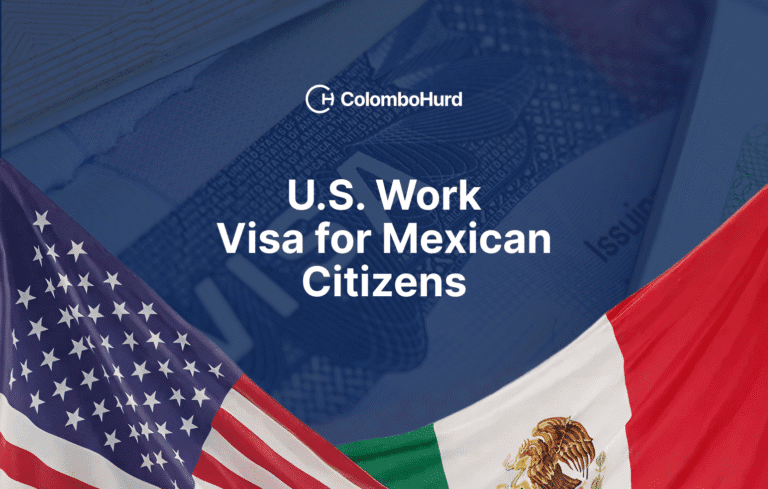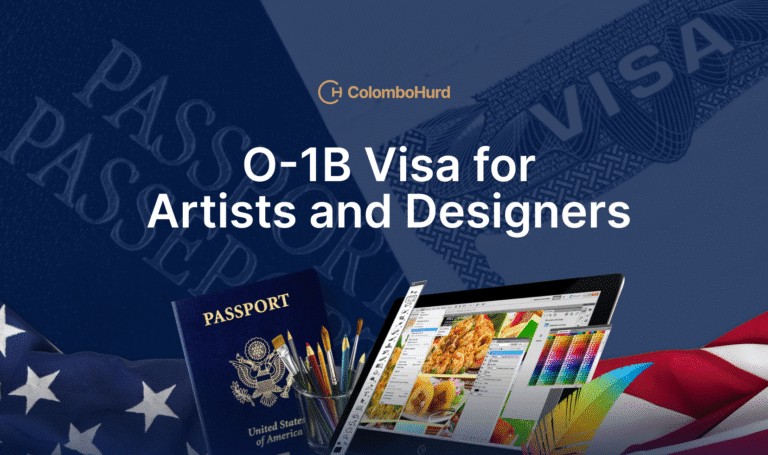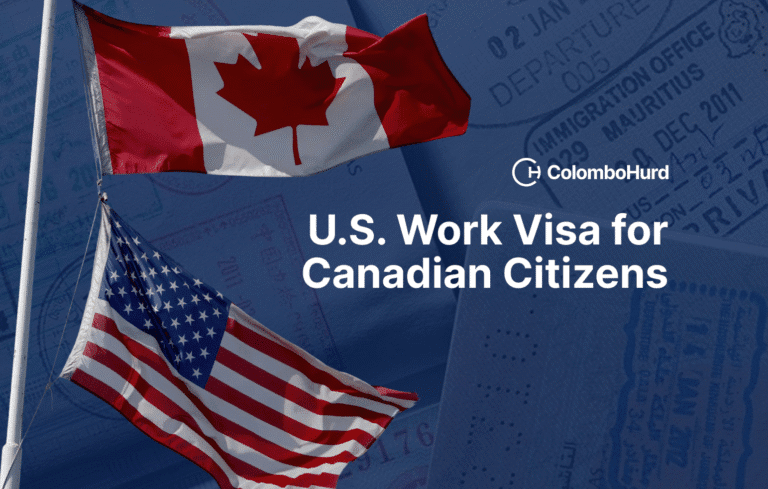On September 21, 2025, two major immigration announcements were made within hours of each other. The first was that new H-1B petitions would now require a staggering $100,000 filing fee. The second was the unveiling of a concept the administration is calling the “Gold Card,” a potential pathway for wealthy applicants willing to make a large payment to the government.
These developments have dominated the news cycle, leaving many professionals and employers unsure of what to expect. What do these announcements actually mean, what remains unchanged in U.S. immigration law, and how should high-skilled workers and companies plan their next steps?
What the H-1B Visa Is and What Has Changed
The H-1B visa is a temporary work visa that allows U.S. employers to hire foreign professionals for specialty roles. These positions usually require at least a bachelor’s degree and are most common in fields like technology, healthcare, finance, research, and higher education. Each year, the government sets a cap of about 85,000 new visas. When demand exceeds the cap, the government uses a lottery to determine which registrations move forward. Those who are selected can obtain an initial three-year period of work authorization, renewable for up to six years.
For decades, the H-1B has been a key bridge for skilled professionals seeking to work in the United States and for U.S. companies looking to hire global talent. But as of September 21, 2025, new H-1B petitions carry a one-time $100,000 filing fee. Importantly, this fee applies only to new, first-time petitions. Current H-1B holders applying for extensions, amendments, or transfers are not affected. Spouses and children on H-4 visas are also unaffected. Universities, nonprofit organizations, and research institutions that are cap-exempt may continue filing without facing the new cost.
The administration’s stated goal is to discourage what it views as abuse of the lottery system by pushing employers to file only for the highest-value roles. Employers will now need to weigh the extraordinary expense against the benefits of sponsoring international professionals. For many companies, the cost may be prohibitive. For others, it may still be worth the investment to secure critical talent.
What Has Not Changed
Despite the dramatic headline, the core structure of the H-1B has not changed. It remains a temporary, employer-sponsored visa subject to an annual cap and lottery. It does not
provide permanent residency, and it continues to tie the foreign worker’s status to the sponsoring employer.
The fee also does not eliminate the basic statutory framework that governs how visas are allocated. Congress sets the cap. The Department of State controls the issuance of visa numbers according to strict priority-date rules. Executive actions cannot alter those core elements.
The “Gold Card”: What It Is and Isn’t
Alongside the H-1B announcement, the White House promoted the idea of a “Gold Card.” According to administration statements, the program would recognize a personal contribution of $1 million to the U.S. government as evidence in support of an employment-based green card petition.
At first glance, the Gold Card has been widely misinterpreted as a brand-new visa category. It is not. Immigration categories such as EB-1A for extraordinary ability and EB-2 with a national interest waiver are written into federal law. Only Congress can create a new visa. What the executive branch can do is direct agencies like USCIS to consider certain facts as evidence when adjudicating cases. The Gold Card proposal is essentially a directive to DHS to explore whether a very large personal contribution could be treated as one piece of evidence in support of an existing petition.
Even if implemented, the Gold Card would not allow applicants to skip ahead of the line. Visa numbers are strictly controlled by priority dates and annual caps. A million-dollar contribution cannot move someone past earlier-filed cases. At most, it could provide an additional factor in the evidentiary record for those pursuing an EB-1A or EB-2 NIW.
The Legal and Practical Hurdles
Both initiatives face significant hurdles before they become workable policy. The H-1B fee will likely be challenged in court as an unlawful barrier inconsistent with the statute. While the administration has announced it as effective, litigation could delay or reshape its enforcement.
The Gold Card faces even greater obstacles. USCIS cannot simply replace statutory eligibility with a payment. Extraordinary ability requires documented acclaim. A national interest waiver requires evidence that the proposed work will benefit the United States. These requirements cannot be waived by executive action. If the agency attempts to substitute a monetary contribution for substantive qualifications, it will face immediate lawsuits. Courts are likely to view any attempt to rewrite statutory standards skeptically.
In short, both policies may generate headlines, but their real-world implementation will be constrained by the limits of existing law.
The Bigger Picture: H-1B Visa Alternatives
Even if the new fee survives, it is clear the administration is signaling a shift away from reliance on the program. For skilled professionals and employers, this is an opportunity to evaluate H-1B alternatives that may offer greater security, autonomy, and long-term benefits.
EB-1 visas
EB-1A is for individuals of extraordinary ability. EB-1B covers outstanding professors and researchers, while EB-1C applies to multinational executives. These categories are often the fastest pathways to permanent residency for those who qualify.
Investor visas
The EB-5 program grants green cards to foreign investors who put significant capital into U.S. businesses that create jobs. The E-2 visa, available to nationals of treaty countries, allows individuals to invest in and manage U.S. businesses, though it does not directly lead to permanent residency.
EB-2 National Interest Waiver (NIW)
This category allows professionals whose work has substantial merit and national importance to self-petition for a green card. It does not require employer sponsorship, giving applicants control over their process. Researchers, entrepreneurs, and other professionals often pursue this route.
O-1 visa
This temporary visa is available to individuals with extraordinary ability in sciences, business, education, arts, or athletics. Many use the O-1 as a bridge while building the record needed for EB-1A or EB-2 NIW.
L-1 visa
This category allows international companies to transfer executives, managers, or employees with specialized knowledge from an overseas office to a related U.S. office. It can also serve as a stepping-stone to permanent residency.
Each of these alternatives has its own eligibility criteria, timelines, and benefits. The best choice depends on the professional’s background, the employer’s needs, and long-term immigration goals.
How Professionals Should Respond
For those already in H-1B status, the new fee may not apply, but it underscores the uncertainty of relying exclusively on temporary visas. Many are now exploring self-petitioned options like EB-2 NIW or EB-1A to secure permanent residency and reduce dependence on employer renewals.
For those abroad who were considering applying for the H-1B lottery, the landscape has changed dramatically. The sheer cost of filing may lead employers to scale back. Candidates may need to look more seriously at alternatives that can provide a more direct path to a green card.
Employers, especially in industries like technology and healthcare that rely heavily on international talent, are also reassessing strategies. Some are turning to the L-1 or O-1 as ways to bring talent without relying on the H-1B lottery. Others are supporting employees in pursuing self-sponsored options.
Enforcement and Compliance: Project Firewall
Alongside the fee announcement, the Department of Labor unveiled “Project Firewall,” a new enforcement effort designed to monitor compliance with H-1B rules and prevent abuse. The administration has emphasized protecting U.S. workers as a central justification for both the fee increase and the enforcement push. Employers should expect increased scrutiny of their H-1B practices.
Looking Ahead
For all the noise surrounding these announcements, it is important to keep perspective. The H-1B program remains intact, but with a purported much higher entry cost. The Gold Card is still only a concept, with many legal and practical questions left unanswered. Neither change alters the fundamental statutory rules that govern U.S. immigration.
What they do signal is a policy environment increasingly skeptical of the H-1B and open to alternative pathways, including self-petitioned and investor-based options. Skilled professionals and employers who plan strategically can still succeed, but waiting for clarity may not be the best approach. Filing under existing categories secures a priority date, which determines your place in line for a green card. That date cannot be taken away, even if the rules shift in the future.
In times of uncertainty, one thing remains constant: careful planning, timely filings, and choosing the right immigration strategy can make all the difference.





